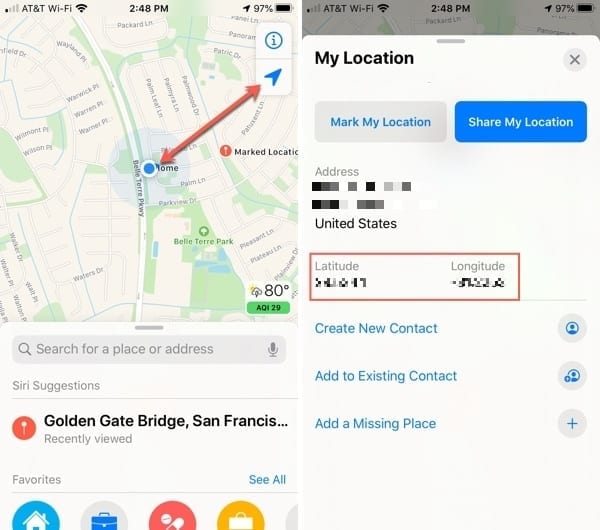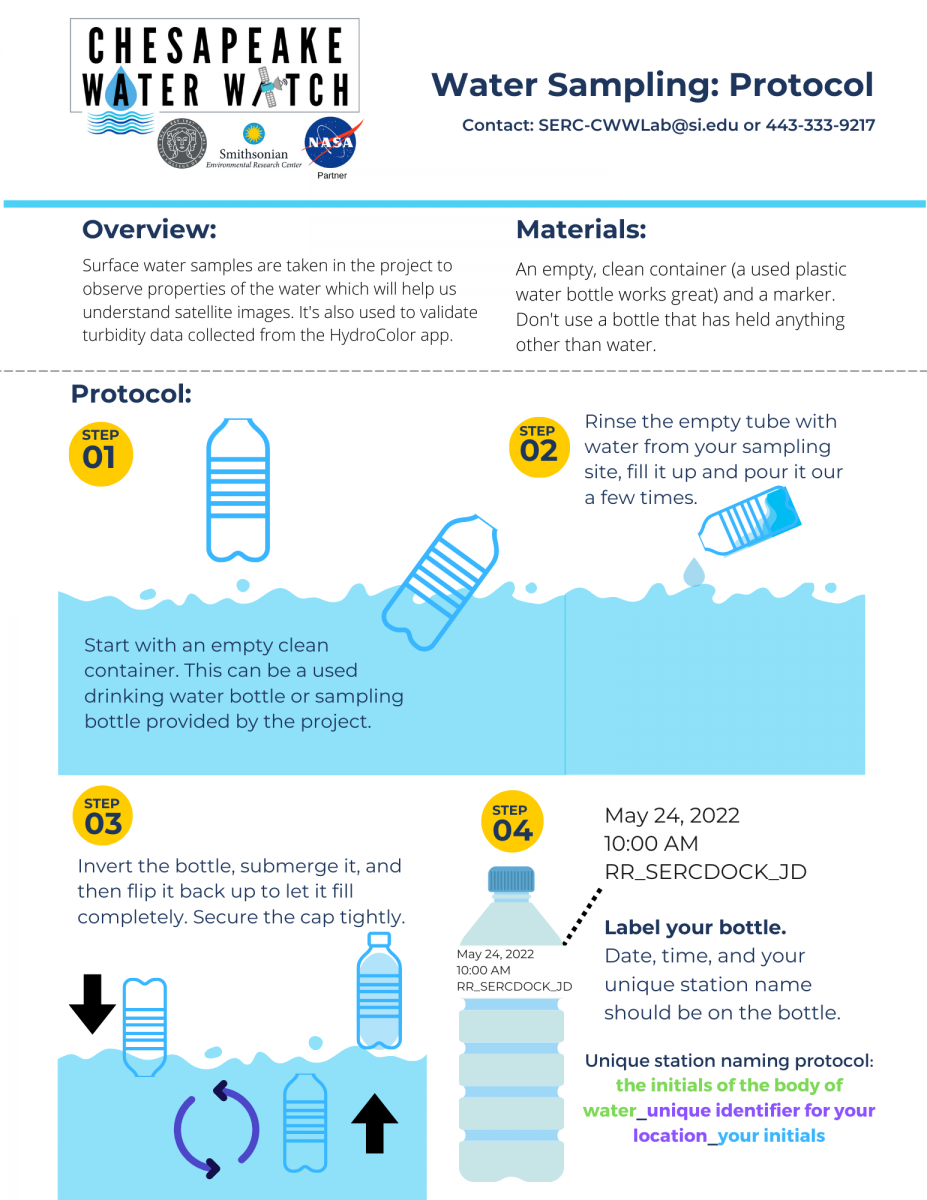Chesapeake Water Watch: Satellites & Samples
Two of our satellites pass over the Bay on the same day!
Event Details
Calling all adventurers and volunteer scientists! Prepare for an extraordinary opportunity to contribute to the Chesapeake Water Watch program (funded by NASA). On July 14th, 2023, two high-resolution satellites, Landsat-9 and Sentinel-2a, will soar over the Chesapeake Bay. Help improve water quality monitoring algorithms by collecting a bottle of water, filling out a quick datasheet, and dropping it off at a nearby collection hub. Your small act can make a big impact on protecting our coastal ecosystems. Join us on this exciting quest for scientific discovery and a sustainable future!
Time
Drop-off samples between 9AM - 5PM. Samples must be dropped off at the collection hubs by 5PM (unless otherwise noted) to ensure we have enough time to transport and process the samples.
What You'll Need
An empty plastic water bottle
A smartphone or device to record GPS coordinates
Event datasheet (or piece of paper to record data)
Collection Hubs
Smithsonian Environmental Research Center
647 Contees Wharf Road,
Edgewater, MD 21037
Drop-off window: 8AM - 5PM
Marshy Point Nature Center
7130 Marshy Point Rd,
Middle River, MD 21220
Drop-off window: 9AM - 3PM
Eastern Shore Collection Hub
42 Prospect Bay Dr. W,
Grasonville, MD, 21638
Drop-off window: 9AM - 5PM
Cooler will be on front porch. Knock or ring doorbell to notify drop-off.
Advocates for Herring Bay
404 Arundel Road,
Tracys Landing, MD, 20779
Drop-off window: 9AM - 5PM
Cooler will be on front porch. Knock or ring doorbell to notify drop-off.
Baltimore Rowing & Water Resource Center
3301 Waterview Ave,
Baltimore, MD 21230
Drop-off window: 9AM - 3PM
How To
CWW Virtual Training: Collecting a Water Sample
For drop-off locations that are not at SERC, you may stop the video at 1:44.
Get GPS Coordinates on Google Maps and Apple Maps
Google Maps
Android
- On your Android phone or tablet, open the Google Maps app
.
- Touch and hold an area of the map that isn’t labeled to drop a red pin.
- In the search box, you can find the coordinates.
iPhone or iPad
- On your iPhone or iPad, open the Google Maps app
.
- Touch and hold an area of the map that isn’t labeled to drop a red pin.
- At the bottom, tap Dropped pin to find the coordinates.
Apple Maps
Get GPS Coordinates in Maps on iPhone and iPad
Open Maps on your iPhone or iPad and then follow these steps to get your current location’s GPS coordinates.
- Tap the current location button on the top right.
- When the blue circle for your spot appears on the map, tap it.
- Swipe up from the bottom to view full details for your location and you’ll see the Latitude and Longitude.

Credit: AppleToolBox
Collection Tips
- Your safety is our #1 priority. If weather does not permit for collection, that’s okay! We will have more events and ways to get involved in the future.
- Be sure to write clearly on your datasheet! We need to be able to match up the water sample to the data on your datasheet. Without both, we won’t be able to use your sample!
- Try to take a water sample as far from the shore as possible. If it’s too close to shore, wave action may contaminate the sample and not give us an accurate representation of the overall body of water.
The Satellites
Long Description
Attention, adventurers and volunteer scientists! Get ready for an extraordinary opportunity to make a splash in the groundbreaking Chesapeake Water Watch program! Brace yourselves as two high-resolution satellites, the incredible Landsat-9 and Sentinel-2a, prepare to soar across the skies above the majestic Chesapeake Bay on a remarkable day—July 14th, 2023!
What's the buzz all about, you ask? Well, the Chesapeake Water Watch program is on a mission to revolutionize water quality monitoring by harnessing the immense power of these cutting-edge satellites. Their ultimate goal? To enhance remote sensing algorithms and accurately decipher the secrets of coastal estuaries and waterways.
Now, hold onto your hats because here comes the exciting part: YOU have the golden opportunity to contribute to this ground-breaking NASA-funded project! Yes, you heard that right! Even if you have an ordinary, run-of-the-mill empty water bottle lounging around, it can become a catalyst for scientific discovery!
So, grab that bottle and prepare to embark on an epic quest to gather crucial data that will shape the future of water quality monitoring. All you need to do is fill out a quick, easy-peasy datasheet with essential information about the water source, such as location and any observations you make. Then, it's time to unleash your inner explorer and drop off your bottle and datasheet at a conveniently located collection hub.
Imagine the thrill of knowing that your simple act of contributing a bottle of water could pave the way for groundbreaking advancements in scientific understanding! You'll be playing a vital role in NASA's quest to protect our precious water resources and safeguard the delicate balance of our coastal ecosystems.
But that's not all! By joining the Chesapeake Water Watch program, you'll be part of a vibrant community of like-minded individuals who share your passion for exploration and scientific discovery. You'll have the opportunity to connect with fellow adventurers, exchange knowledge, and become a champion for the preservation of our environment.
So, let's dive into action! July 14th, 2023, will be a day to remember. Grab your empty water bottle, channel your inner scientist, and embark on an incredible journey to contribute to NASA's Chesapeake Water Watch program. Together, we can make a difference and pave the way for a brighter, more sustainable future for our planet. Get ready to make waves!



